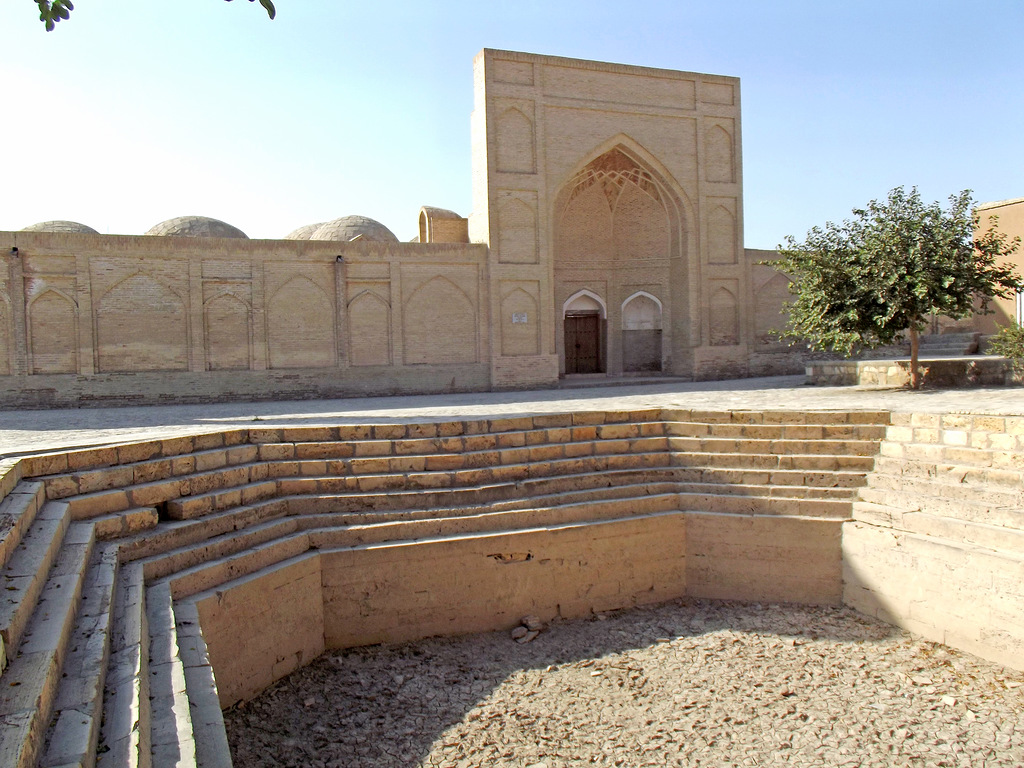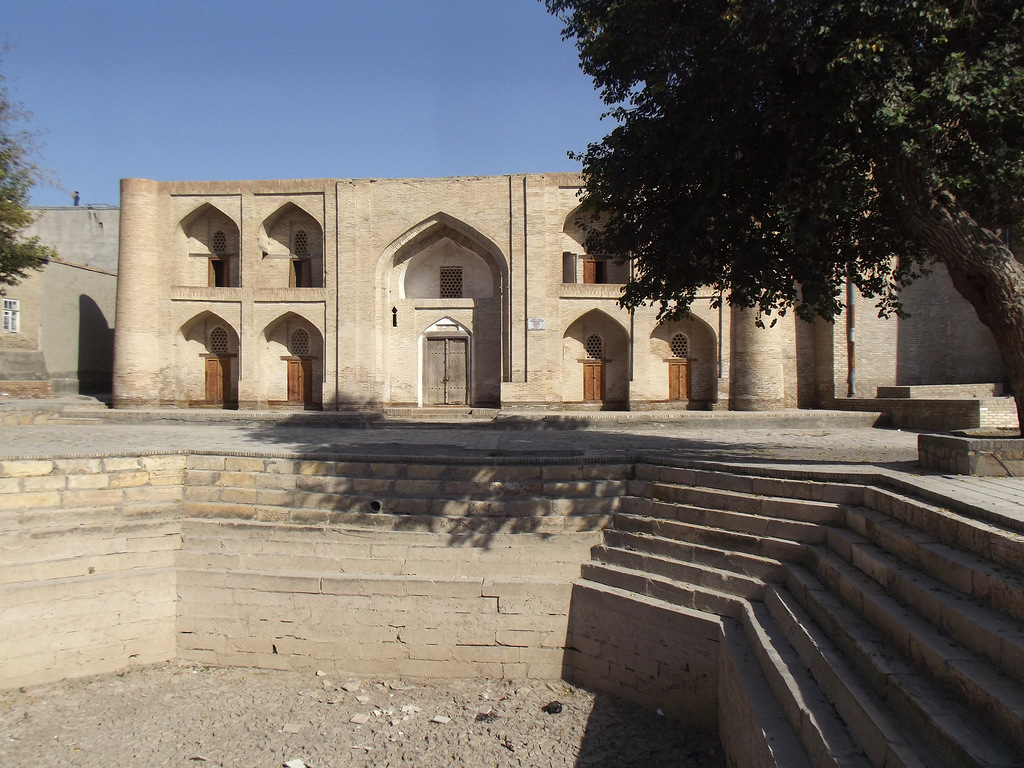Medieval Bukhara is a great phenomenon in architecture. The beginning of the 16th century was an epochal period of unstable authority of the pioneering khans of Shaibanid dynasty. The capital of young Shaibanid state - in period between 1533-1539 under the government of Ubaidullah-khan it became the Bukahara Khanate - was once and again transfered from Samarkand to Bukhara - from Bukhara to Tashkent - and back.
One of the major ensembles in the center Bukhara is Khoja-Gaukushan(Gaukushon Complex). The madrasah was built in 1570 by order of Abdullah-khan II (1561-1598). He came to power with the help of Khoja Islam Juibariy - the powerful leader of local clan of Khoja(s). This clan - often identified as "Juibariya". Abdullah-khan was a disciple (murid) of Khoja Islam, therefore he always gave support to the clan. He built many religious and civil installations for them.
Gaukushan means "one who kills bulls" because earlier there was a slaughterhouse at that place. The Gaukushan Madrasah was erected at the bifurcation of streets, it explains its trapeziform. This, however, did not hinder the preservation of the traditional courtyard layout.
In 1598 Khoja Sa'ad - called "Khoja Kalon" - "Great Khoja", the son of Khoja Islam - built new cathedral mosque, named "Khoja Mosque" or "Khoja Kalon Mosque", with tall minaret close to the Gaukushan Madrasah.












